Menu
Please click on a link to take you to each page.
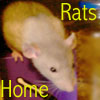
General Care
Personality/Habits
Lifespan
Nail & Teeth trimming
Baths
Introduction/Fighting
Quarantine
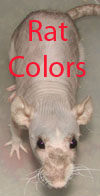
Colors & Markings
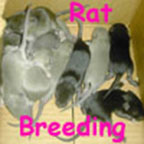
Sexing info
Pre-Breeding info
Pregnancy Info
Baby Info
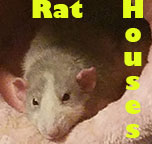
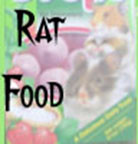

Health Tips
Eyes
Mycoplasma
Pneumonia
Temperature
Bugs
Veterinary Care
Abscesses & Tumors
Bumblefoot
Sprained ankles/Torn toenails
Wounds
Degloving/Tail injury
Aggression
Ears
Megacolon
Barbering
Old Age
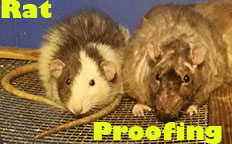
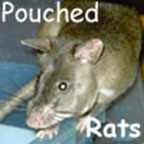

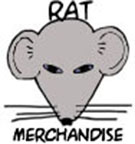
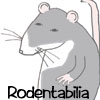
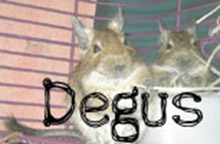

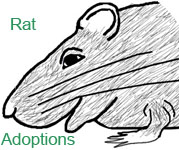
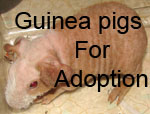
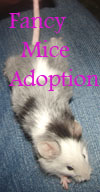
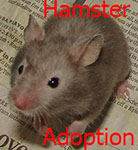
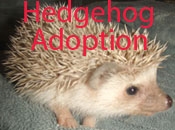
Please click on a picture to take you to each page
80stoysale.com HOME
Menu
Please click on a link to take you to each page.

General Care
Personality/Habits
Lifespan
Nail & Teeth trimming
Baths
Introduction/Fighting
Quarantine

Colors & Markings

Sexing info
Pre-Breeding info
Pregnancy Info
Baby Info



Health Tips
Eyes
Mycoplasma
Pneumonia
Temperature
Bugs
Veterinary Care
Abscesses & Tumors
Bumblefoot
Sprained ankles/Torn toenails
Wounds
Degloving/Tail injury
Aggression
Ears
Megacolon
Barbering
Old Age












Please click on a picture to take you to each page
80stoysale.com HOME
Information on what to feed your ratties.
Rats love food! They will eat just about anything!
- Rats are scavenger animals.
- Rats do not have a gag reflex and are unable to throw up.
- Rats test all new foods they have not eaten before and then wait a while and if they don"t get sick, then they will come back and finish the food. This is why it is so hard to poison them in the wild.
After a rat has eaten a certain type of food several times or if another rat in the pack sees another rat eating a certain type of food they are more likely to eat it without testing it.
- Pet rats tend to stop testing their food after a while as they learn to trust their owners.
- As a general rule, if you will eat it your rat will eat it.
- Beware of leaving your food unattended as rats will steal it, likely stash it and possibly eat the whole thing, which could cause them to get sick.
- Don't under-estimate your rats strength, they can steal whole pieces of pizza, tacos, hot dogs etc.
- Rats love eating dried or cooked pasta (especially with tomato sauce), frozen or cooked vegetables, shredded Cheese, cooked Mashed Potato's, cereals & breads.
- Cereal is a good snack to give to your rats, especially healthy ones like Rice Krispies, Puffed wheat, Cheerios and Corn flakes.
- Rats like seeds such as sunflower seeds (Black oil sunflower seeds are healthier and typically lower in fat then black and white sunflower seeds)
They also enjoy Pumpkin seeds & other unsalted nuts.
- Rats will eat meat but most aren't particularly fond of it.
If the meat is covered in a type of sauce or flavoring sometimes they will just lick off the sauce and leave the meat uneaten.
- Do not feed raw meat! Raw meat can harbor disease and can rot in the cage if left uneaten which could cause Salmonella poisoning.
Only feed cooked meat
- When looking for appropriate snacks for your Rats, look for packages that say they are for Small animals, Rats, Mice, Hamsters, Gerbils and occasionally guinea pigs, ferrets & rabbit snacks.
- Harlan Teklad Lab blocks/Envigo:
A lot of rat owners feed their rats Harlan Teklad Lab blocks which is a Vegetarian based block type food that is produced for Lab animals that need to be fed a steady diet of the same thing so food doesn't skew research results. There are several different formulas with different Protein levels.
Feeding just Lab blocks will sustain a rat but feeding them a varied diet is much healthier for them.
Rats when fed a varied diet tend to be larger in size and healthier then rats fed only Lab blocks
- Other Lab blocks:
Some Pet stores such as Petco and Petsmart have their own brand of block food. Some of these block foods contain molasses, which is sugar. To much sugar is unhealthy. - Oxbow pellet food:
Oxbow is recommended by many rat owners in online community's. However Oxbow foods are made from Alfalfa which rats do not like. Oxbow is a pellet food that is all one size and color.
I don't believe feeding just Oxbow pellets provides enough variety in a rats diet.
- Feed Junk food in moderation. If it is not healthy for you, it is not healthy for them.
*My Rats listen for the sound of plastic packaging, and always come running when i eat cookies, chips or any foods that comes in bags. - Some owners with numerous ratties buy bulk foods and mix up their own rat food mixes.
Mixing your own food is usually cheaper then store bought foods.
If a rat is obese or has a health issue sometimes mixing a diet with controlled levels of iron, fats or protein is necessary.
- Dog food:
Some rat owners mix dry dog food in with their rat food mixes for added protein. (such as dog food for small dogs or puppy's -example Purina Little bites)
Be aware feeding to much dog food which is high in protein can cause hot itchy spots on the skin or grease build up on the hair and skin.
Feeding dog food to pregnant and nursing mothers helps provide a little extra protein for them. - Monkey Chow:
It has been rumored that rat owners on occasion have fed their rats monkey chow.
However Monkey chow is designed for monkeys, not rats and is not a sufficient enough diet for rats -even if a rat is just a monkey in disguise! :).
I don't recommend feeding rats monkey chow, it can be hard to find and rats tend not to care for it.
* I Fed my rats Monkey chow once, which looks like a large Lab block and it took them about two months to go through one piece, so needless to say they didn't seem to like it very much, as it is for Monkeys -not rats
- Rats eat frequently throughout the day. Leaving food available all the time is important for a happy, healthy rat.
Sometimes for health reasons a feeding schedule or regulated diet might be necessary. Such as if a rat has to much iron, protein or is obese. - If a food dish is getting low on food but still has some food in it, you can sprinkle the top with a little bit of new fresh food and mix it up, this will encourage the rats to sift through and eat it, rather then just leaving the bits and pieces of food they aren't particularly fond of.
Old uneaten foods can be thrown outside for birds and squirrels.
- Make sure to empty out the old food from your rats dish and clean it frequently, once in a while the water bottle may drip into the bowl and it appears as if the dish is full when it is actually all moldy and stuck in the dish.
- Applesauce and Oatmeal (cooked or dried) are great foods to feed elderly or ill rats. Applesauce has lots of water in it and is also food. Oats/Oatmeal is good to help keep the stomach and intestines regular and can help prevent or stop diarrhea.
- Food storage/Plastic bins: Keeping rat food in plastic storage bins will help keep bugs such as moths out of the food. It also keeps debris such as dust and bedding from falling into the food.
Having food in a plastic bins will also keep your ratties from chewing open bags and eating or stashing all of the food.
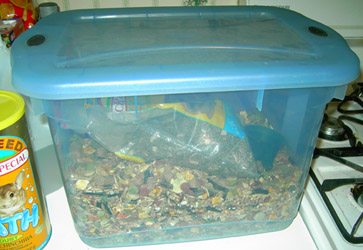
My Rat Food Mix
I mix my food in a plastic bin
I mix equal parts of Black oil Sunflower seeds and Scratch grains (Corn and oats)
then i mix in Malt-O-Meal Honey Nut Spooners (Generic Cheerios)
Puffed wheat
and on occasion Frosted flakes and/or corn flakes Dried pasta ( i use a variety of dried pasta and typically use a different type every time i buy more) I also mix in dried oats/oatmeal and unsalted nuts on occasion.
I feed 1 to 5 pieces of Purina Little Bites/Purina small dog dog food per rat a day. Dog food is good extra protein for pregnant and nursing mothers.
I also feed them some sort of human food on a daily basis. (IE: leftover from lunch and dinner)
- It is a good idea to keep your rat food in a plastic storage container, that way no bugs can get in or out.
Rat Dishes:
Here are some food bowls & dishes that can be used.
This food dish has a little tray ledge on it, so the rats can rest on it while sorting through the dish. (won't work in aquariums)

These type of bowls are easily tipped over which tends to cause a messy cage, so they don't work well for everyday food, but they do work well for snacks.
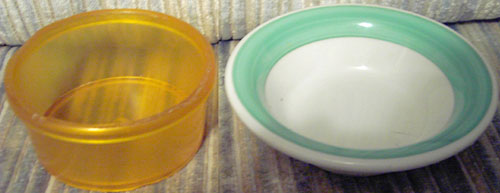
The Chocolate Debate
- I have never heard of a case of a rat becoming ill from eating chocolate.
- Some people say rats should never be given chocolate, others say chocolate in moderation is perfectly alright.
- Chocolate as with all junk food should be fed in moderation! (Not everyday)
- Feeding your rats Dark chocolate while they are having breathing difficulties has been known to help their difficulties improve. (Make sure the piece is small enough so they don't have to open their mouths wide or have a hard time gnawing into it, as that may distress them more if they are having breathing difficulties.)
- Dark Chocolate contains Theophylline which is known to help breathing troubles decrease in patients with Asthma.
- Small chunks of Dark chocolate or chocolate baking chips work well for snacks.
- Be careful that the chocolate is not overly sticky or melted if you are giving it to them to help breathing trouble, as that could cause more breathing problems and/or choking.
Insects/Bugs:
Some rats will eat meal worms, crickets, spiders, ants or other bugs on occasion.
Sometimes rats will throw bugs out of the cage if they don't like them crawling about.
If a fly or moth flies around the rats, sometimes they will swat at it and try to catch it.
Some bugs can be poisonous so be aware of what bugs you have in your house.
Bugs such as meal worms are high in protein and can help to add nutrients to a rats diet.
Most rat owners do not feed their rats bugs.
Water dish Vs. Water bottle:
Should you use a water bottle or a water dish?
- For most rats that live in cages, water dishes aren't practical as they will run over them, tipping them over getting the cage and their food all wet.
Water bottles work best in cages.
- Water dishes can be placed on the floor for the rats to play in during free range time.
*I have found my rats really enjoy playing and dunking their heads and bodies into water dishes to wash their faces and to help cool down. I place water dishes around their free range play areas and water bottles in their cages. - Some people change their water bottles everyday while others use the same one and just refill it,
- Some people use tap water, some use bottled water, some use filtered water, some have water filtered through a water softener, some even boil all water to get out the bacteria before giving it to their rats.
It is really up to you what water you would like to give to your pets.
- Don't forget to clean your water bottle out frequently, to clean out grime and hard water build up.
- For easy water bottle cleaning you can buy a bottle brush cleaner -Available in baby departments, sometimes the kitchen section and some pet stores.
- Hard water build up can be easily removed if you let the dishes soak in vinegar for several minutes and scrub the dishes with a dish scrubber.
Here are a few water bottle hanging tips:
- Most water bottles come with an odd shaped hook.
- To hang water bottles on wire cages, Wrap the hook around the water bottle, tightening it to just the right size to hold the bottle, then prop the hooks onto the wire cage bars so that the water bottle is hanging slightly slanted so it will not fall through the hooks. If you hang the bottle completely upright the bottle will fall through the hooks.
- To hang water bottles on aquariums, Bend the wire to an upright position so you hook one end on top of the aquarium and the other end through a hook in the bottle.
If your water bottle has no hole to hang it from you can wrap string, shoelaces or yarn around the bottle and then hook the hook through it to hang it.
- Have a water bottle but no hook or are unsure how to hang it?
You can wrap the top of the bottle with duct tape and tape a small duct tape hook on to the top and hang it with a wire, or twist tie. You can also tape on shoelaces or some sort of cord to hang the water bottle with. - Pet stores also sell water bottle holders which can be hung on cages.
Are your rats constantly chewing through their water bottles and causing them to leak all over?
Here are a few ideas to try:
- Wrap the water bottle in duct tape, you can even create a duct tape handle for easy hanging. (you can use electrical tape, but duct tape is very sticky and tends to detour rats from chewing more efficiently.)
- If your rats chew through their water bottle, save the bottom screw on drinking piece and get a 20 oz. soda/water bottle and screw that into it for a brand new water bottle. (You might want to tape it up if your rats chewed through their other bottles.)
- Glass water bottles are not a very good idea, they can get broken by the rats banging them around or you can break them when trying to fill or clean them.
Glass also gets easily dirty and corroded from hard water if you use unfiltered tap water.
- You can also purchase water bottle holders at most pet stores, they have some that fully encase the bottle in a metal covering making it very difficult to chew through. However, these can be dangerous if your animals climb them and get a hand or foot caught in the metal slots.
- A jar lid can be placed on top of a 16 oz. water bottle (such as from Spaghetti sauce or jelly) by pressing it on or pressing it on with a small amount of glue, this will prevent them from being able to chew the top of the bottle if they like to climb it and sit on it.
- look for bottles with the thickest plastic available as they will likely last longer then thinner plastic ones.
The hard plastic water bottles that rats can not chew through sometimes are located in the "Bird" section of the pet store rather than the "Rodent" section.
In the picture: On the left is a heavy duty unchewable water bottle and on the right a easily chewed water bottle.
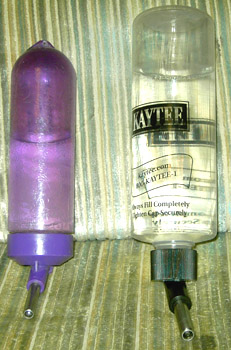
Foods to beware of or NOT to feed your rats:
- Licorice, raw sweet potato's, Bleu cheese, raw red cabbage, raw Brussel sprouts, raw artichokes, green bananas, green potato skins & Rhubarb should not be fed to rats.
- Peanut butter straight from the jar can be dangerous, your rats mouth and throat can get all sticky and closed up and cause difficulty in breathing.
- Orange juice in large amounts can cause health problems. (Specifically kidney failure in Males only.)
Males would have to be given over a glass of orange juice everyday of their lives to be effected. However, it is still a good idea to avoid giving it to your rats frequently.
- Carbonated drinks can cause problems, as rats can not burp or pass gas. A little drink every now and then is alright but do not let them drink a lot, as it could cause an upset stomach and/or bloating.
- Junk food should only be fed in moderation. If it is unhealthy for you, it is unhealthy for them.
Here are a few snack items ratties enjoy!:
- Cereal (healthy ones are best) (Cheerios, Puffed wheat, Corn flakes, Wheaties)
- Rats love yogurt drops and many rattie owners refer to them as Yogies.
- Kaytee brand yogurt chips
- Kaytee brand Krunch a-rounds
- Vitakraft Happy Dinos
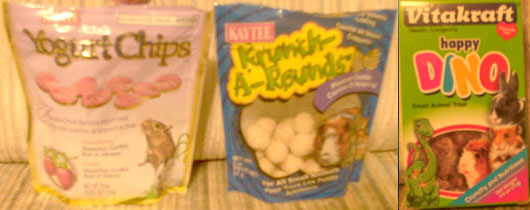
- Vitakraft Yogurt drops (3 different flavors)
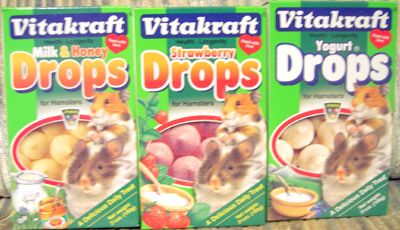
- Vitakraft Raviolios
- Vitakraft Rondis treats
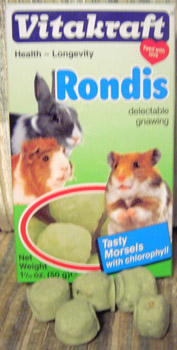
- Kaytee berries (red & blue berries, looks like cereal.)
- Hartz Yogurt covered soy nuts
- Toasties, small animal snack crackers
- Nutri nibbles odor care treats, crunchy & creamy apple flavor.
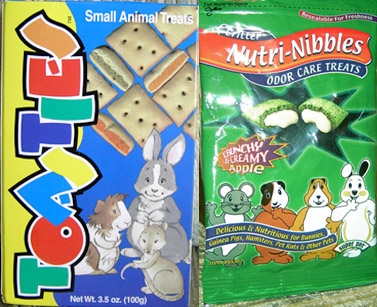
- Small animal crackers & Yogurt covered bananas that pet stores sell in the scoop yourself bins also make good cheap snacks for rats.
- Hamsteroids -are a good hard treat to help keep the rats teeth healthy.
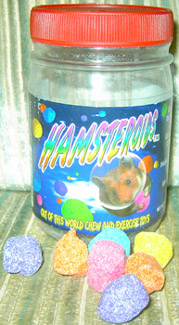
- Loftys -small green crunchy treat.
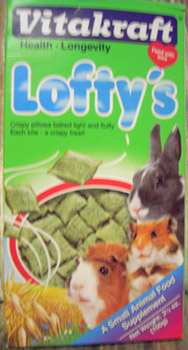
Please visit all my Pages!